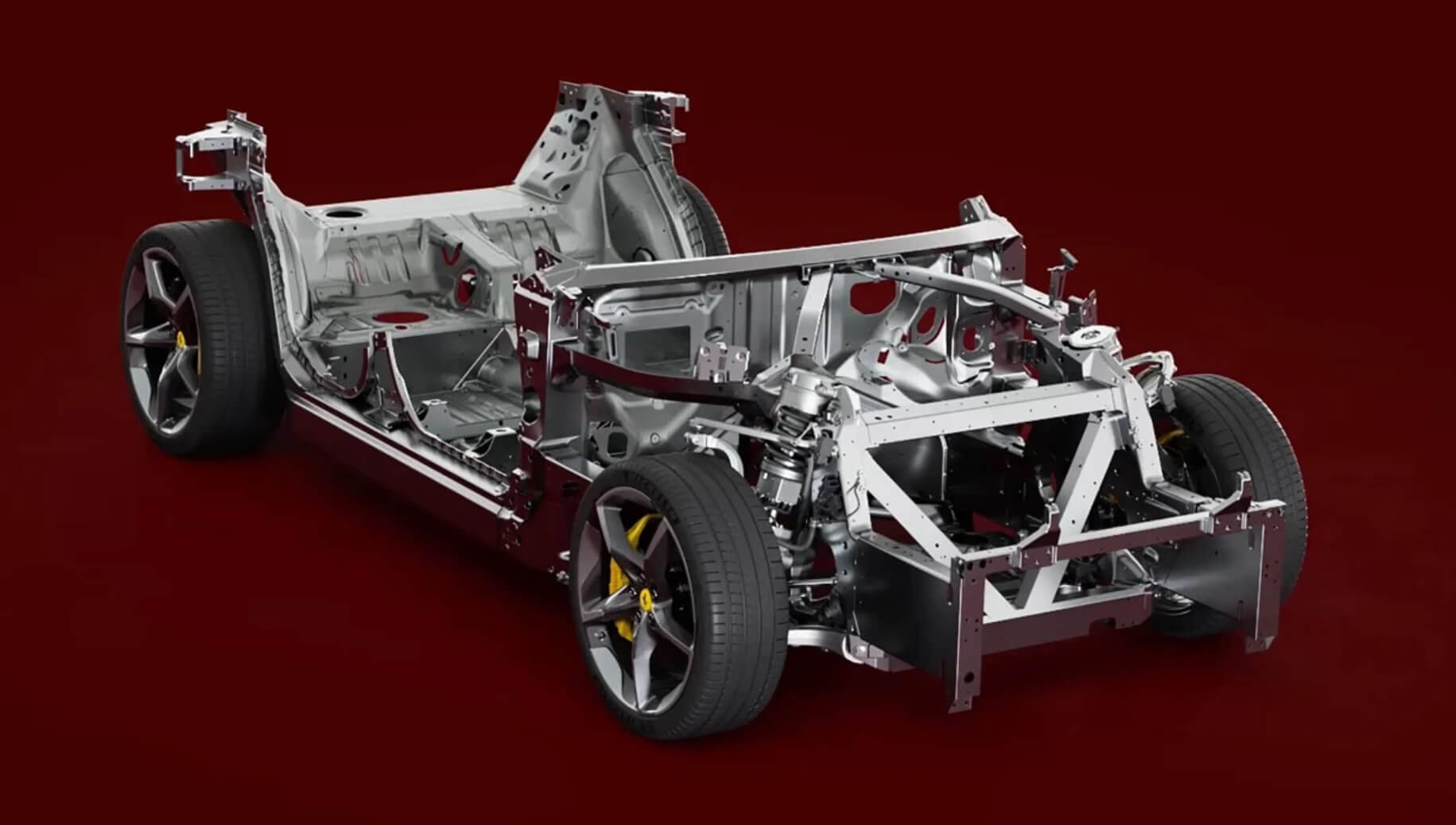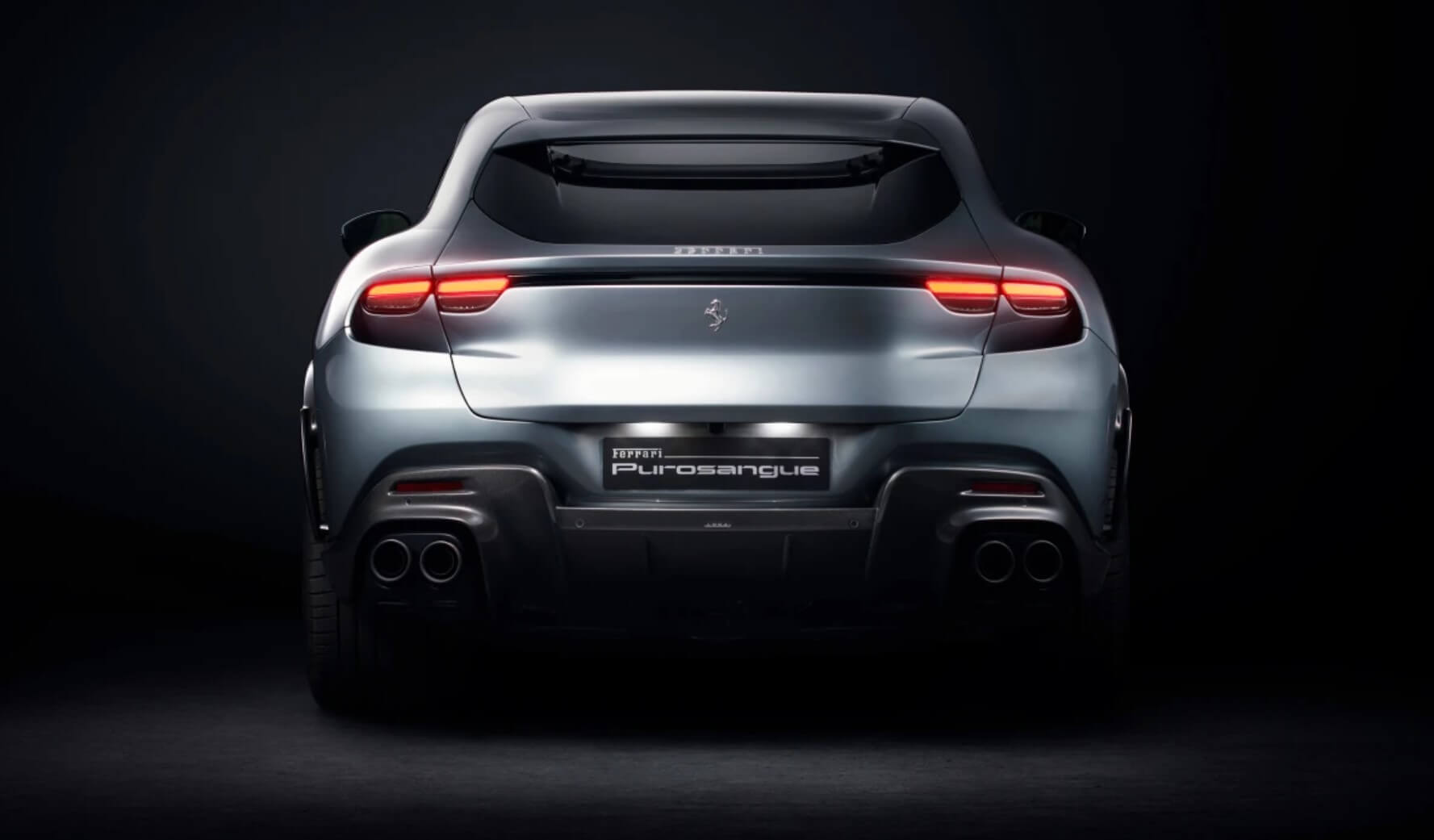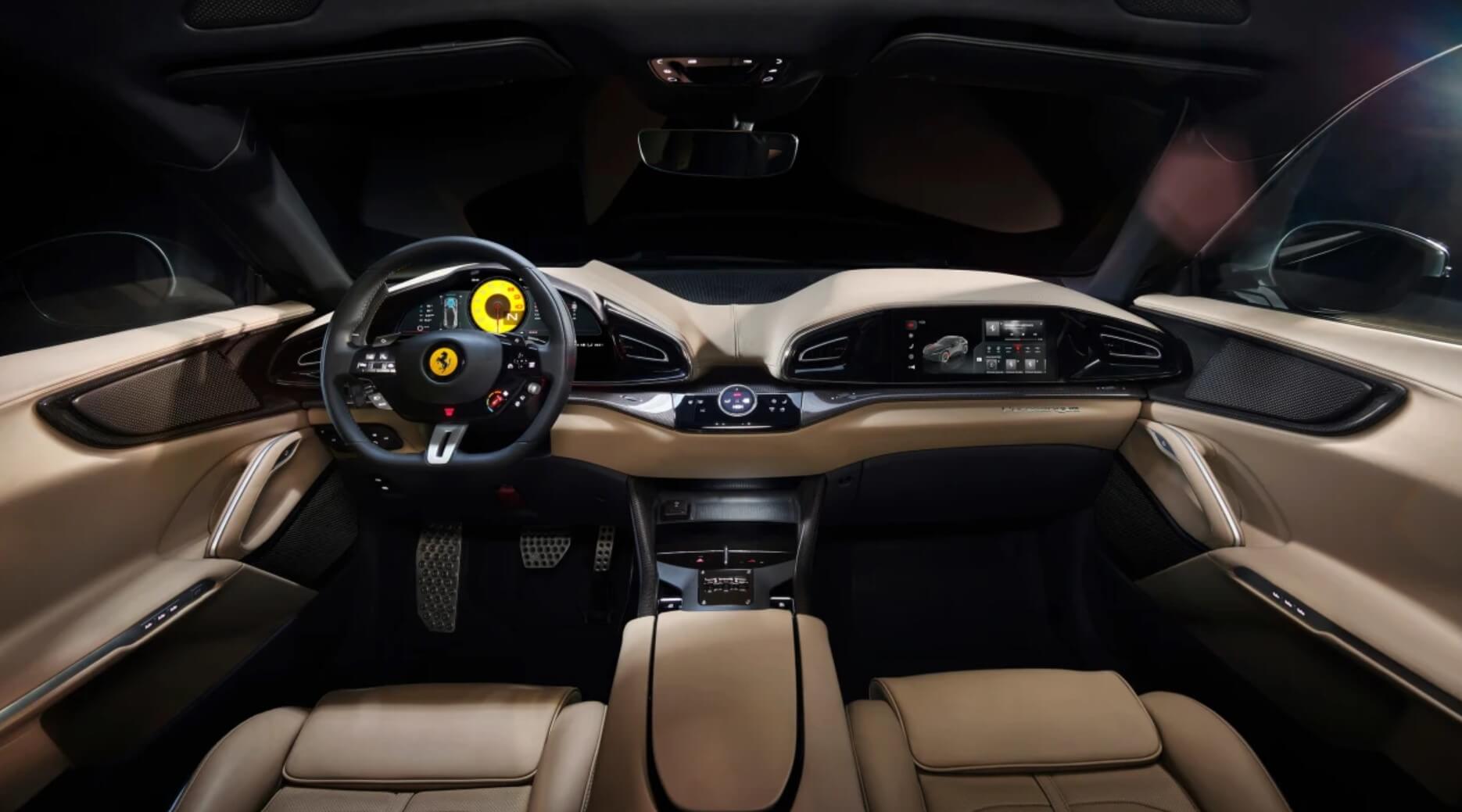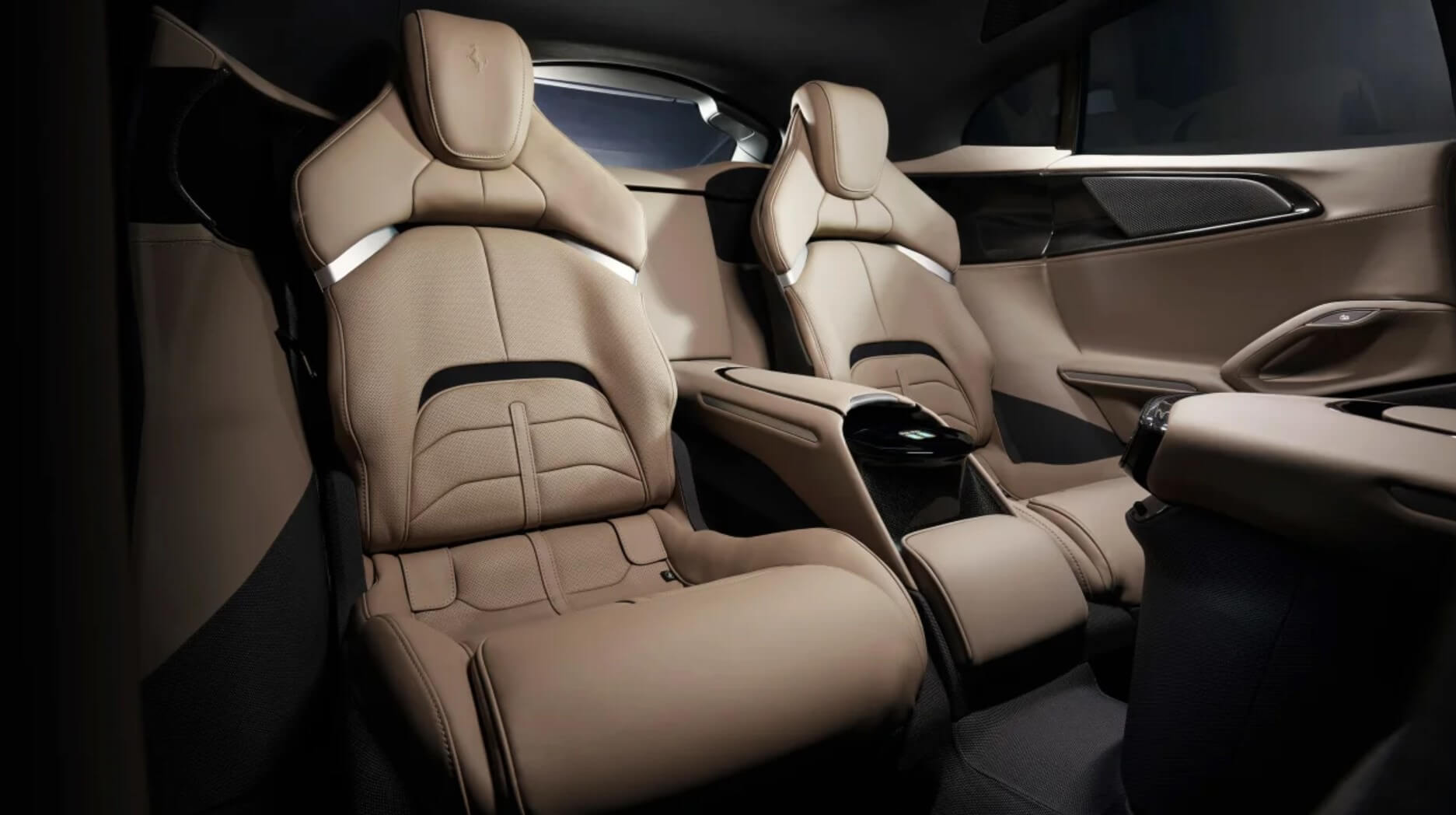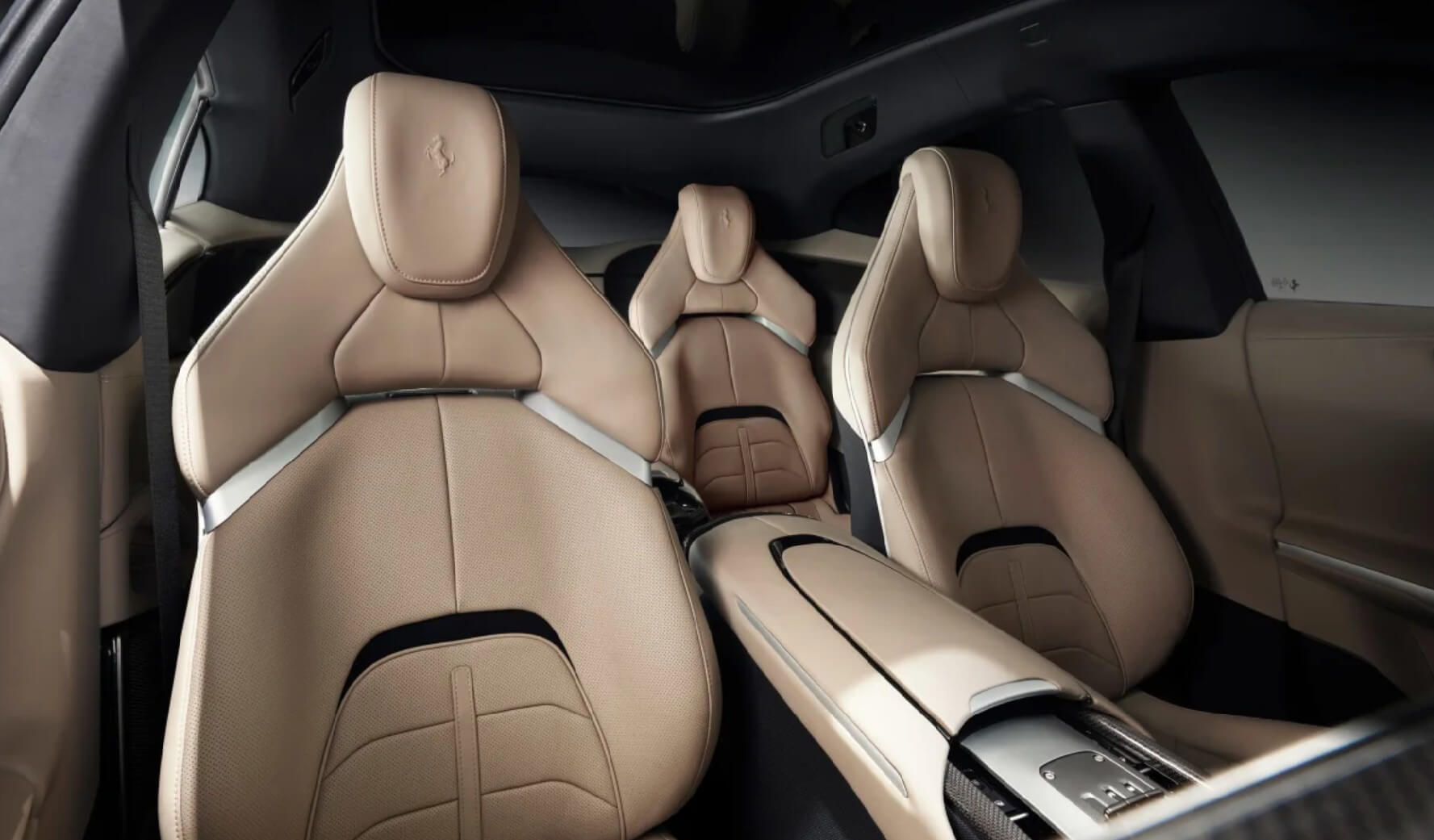Ferrari has revealed the Purosangue in full, its answer to the Lamborghini Urus and Aston Martin DBX.
Ferrari has finally revealed it’s first-ever ‘SUV’, the Purosangue. However, this is not the car you think it is says Ferrari. Rather it’s a four-door, four-seater sports car that fits a new sector. The Purosangue is the car Ferrari says removes the final barrier for those unable to find the Ferrari that suits their needs, although very much an accompaniment to a collection rather than a replacement for one of its existing models.
Built on a new aluminium chassis, the Purosangue features unique active suspension, rear-opening ‘welcome’ doors, and is powered by a familiar 6.5-litre naturally aspirated V12 producing 533kW. And it will most likely cost from around $600,000.
It is not a small car as you’ve probably guessed, although it is 13cm shorter than a Lamborghini Urus and over three-centimetres shorter than Aston Martin’s DBX. Yet it’s wider than both, giving it a very four-square stance accentuated by its short overhangs. At 1589mm it’s nearly 10cm lower than the aforementioned pair, too. And of course it has a raised ride-height, complete with wheel arch extensions that can be finished in black trim or carbonfibre.
There’s a mix of SF90 and 296 GTB to the design of its raised nose, with aero ducts over and through the front bonnet and wheel arches. You might spot some GTC4 Lusso design cues in its flanks and rear design, including the swollen rear haunches that necessitated the need to hinge the doors from the C-pillar rather than the B. The front hinged clamshell bonnet adds some drama to proceedings too.
Some will hate its design, others will ridicule it and the lazy will poke fun at how it looks. But Ferrari, who don’t run customer clinics when it comes to designing its cars, won’t care one bit, as its confidence has been buoyed by orders already running into two years.
Ferrari Purosangue16
Many of those orders came off the back of the confirmation that the Purosangue will be powered by a V12, Ferrari’s venerable F140 engine that first appeared in the Enzo and most recently the Daytona SP3, and every front-engined Ferrari in between.
Work has been carried out internally on the dry-sump engine, with new cams, conrods, valvetrain and intake, timing and exhaust all new and redesigned to meet its performance goals. Its cylinder heads come from the 812 Competizione and the crankshaft is now the same length as that found in the 812 and Daytona models, resulting in a larger stroke.
It means that for a four-door, four-seater there’s some serious numbers: 533kW arrives at 7750rpm, with 80 per cent of the engine’s 716Nm available from 2100rpm with the full whack arriving at 6250rpm. While the V12 is positioned front-mid within the Purosangue’s engine bay, the eight-speed double-clutch gearbox sits on the rear axle, with drive sent to it as well as the revised PTU (power transfer unit, as seen in the GTC4 Lusso models) that sits on the front of the engine, driving the front axle.
Inside the eight-speed gearbox are the seven shorter ratios also used in the SF90 Stradale and 296 GTB, which combined with the larger 22 and 23-inch wheels (offered with a Michelin Pilot Sport 4S or Bridestone’s new Poteneza Sport tyres), shorten the ratios compared to the Lusso. Eighth gear is a longer touring ratio. While there’s not a whiff of electrification within the powertrain, the engine and gearbox are able to decouple to allow the car to ‘sail’.
This packaging results in a 49:51 percent weight distribution. Against the clock it means you’ll accelerate 0-100km/h in a claimed 3.3sec and go beyond 310km/h – wet weight stands at 2180kg.
Underpinning this DBX707-rivalling performance is a new aluminium chassis that has a 30 per cent increase in torsional rigidity and a 25 per cent improved beam stiffness over the GTC4 chassis, it’s lighter, too. At each corner is an active suspension system that’s been co-developed with Multimatic, who Ferrari also worked with on the SF90 Assetto Fiorano.
Consisting of a passive spring over an adaptive damper, it also features Multimatic’s clever ‘True Active Spool Valve’. This has allowed Ferrari to incorporate an electronic motor, via a 48-volt electrical system, with the hydraulic damper connected to the spool valve allowing for more force and higher frequencies to be applied compared to a traditional adaptive or semi-active system. It means there is variable and continuous distribution of roll stiffness, actively lowering the body by 10mm depending on the forces applied to the tyres. It also allows Ferrari to do away with traditional anti-roll bars.
And there’s more. The four-wheel drive system from the GTC4 Lusso has evolved to include software updates derived from the SF90, and the 812 Competizione’s groundbreaking independent four-wheel steering technology is also fitted. While Ferrari wouldn’t go as far as to say this is a model designed for off-roading, it does feature hill descent control software along with every ADAS system you can think of.
Naturally, there is a Manettino with the usual spread of driver and traction control modes, but what there isn’t is an off-road mode. Although you can specify an electronically controlled 30mm ride height lift kit.
Manufactured from a mix of aluminium and carbonfibre – the latter is the standard material for the roof with a panoramic glass roof available as an option – the Purosangue’s body design features two distinct levels: a flowing upper body paired to a more technical lower that provides a ‘floating’ appearance Ferrari has also patented.
With the doors open the Purosangue’s interior beckons you in, with four-sculptured seats and a wrap-around cockpit. A removal of the B-pillar was considered early on in the car’s development, but the structural compromise was deemed too significant to employ it. Despite appearances though, ingress and egress from the rear isn’t as tight as it might look. With the front seats set for six-footers, rear occupants enjoy plenty of space, although it can be a little cramped in the footwells for those with larger feet. The relatively tall glasshouse prevents any sensation of claustrophobia though, and I’d suspect the panoramic roof will be a popular option.
It also feels a step up from the supercars in terms of quality and luxury – a different approach to suit the new expectations of its customers. There’s a level of detailing that’s absent from its sports cars, the materials welcoming the acres of carbonfibre harvested accordingly. Talking of materials, if you’re done with carpet or leather for your floors, a bullet-proof, ballistic fabric is offered as an alternative. You can also specify your carbonfibre to have a copper thread woven within it.
Apple CarPlay and Android Auto are both standard fit, negating the need for Ferrari to include an in-house sat-nav system; other OEM’s please take note. Ferrari also won’t be offering over the air updates as it doesn’t believe the technology is secure enough for its customers.
There’s not a huge amount of boot space, but the parcel shelf stows under the boot floor to free up the load height and the rear seats fold flat with ski hatches present. Ferrari is also offering ‘transport’ solutions for bikes and such like.
In 2015 the late Sergio Marchionne, Ferrari’s then CEO, said it would not make a car like the Purosangue because the technology wasn’t there to create something suitable to wear the badge. In 2018 that clearly changed when the go ahead was given to start work on its design and development. Four years later and the first customers are now eagerly awaiting delivery of their Purosangue, which will start during Q2 of 2023.
Production will be capped at 20 per cent of Ferrari’s total vehicle production (expect in the region of 2000 Purosangues to be built a year on the V12 production line at Maranello), with the order book for the first few years pretty much full. Ferrari might not be calling it an SUV but it would appear it has built a car to appeal to those who have been waiting patiently for one.
Stuart Gallagher







